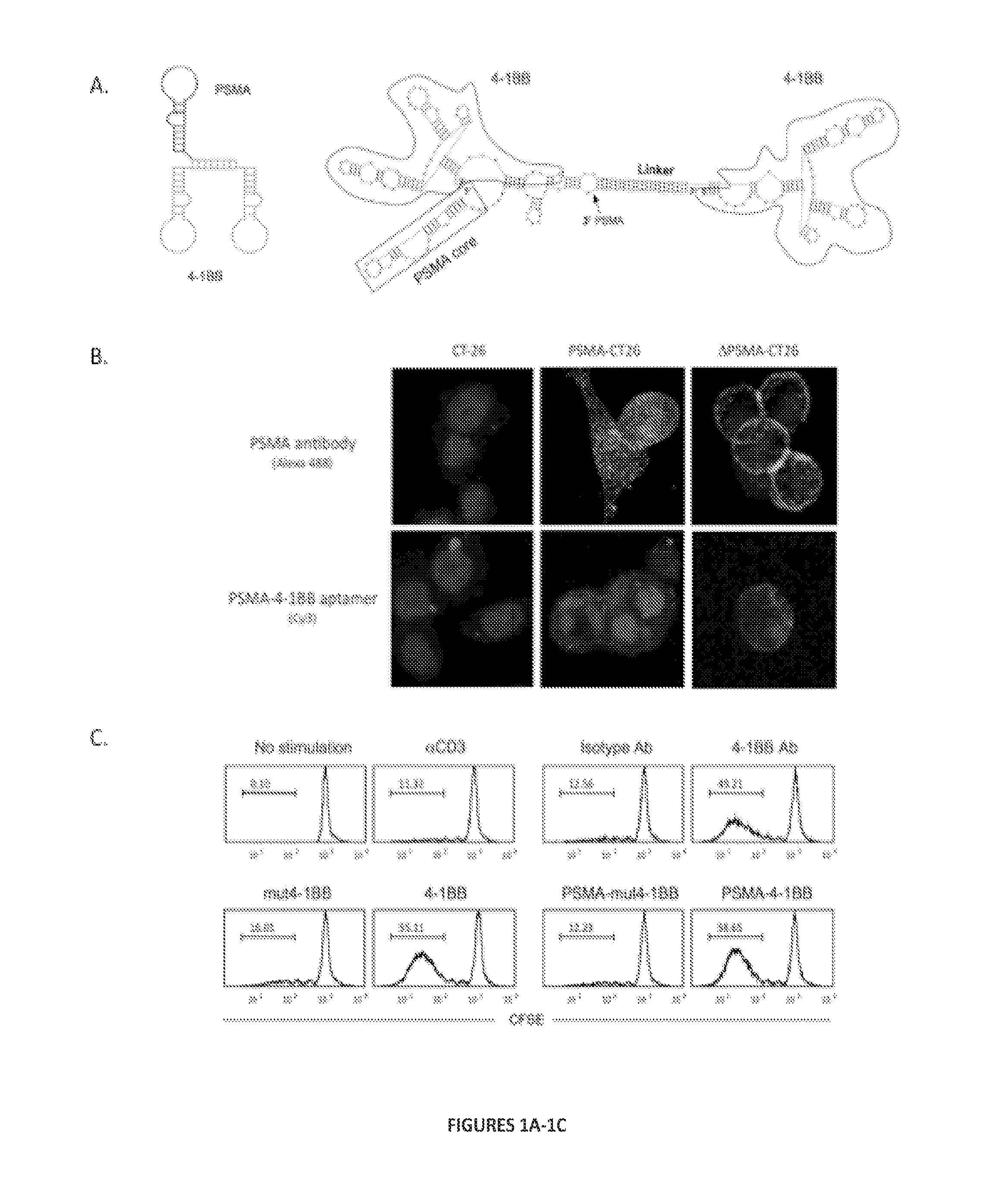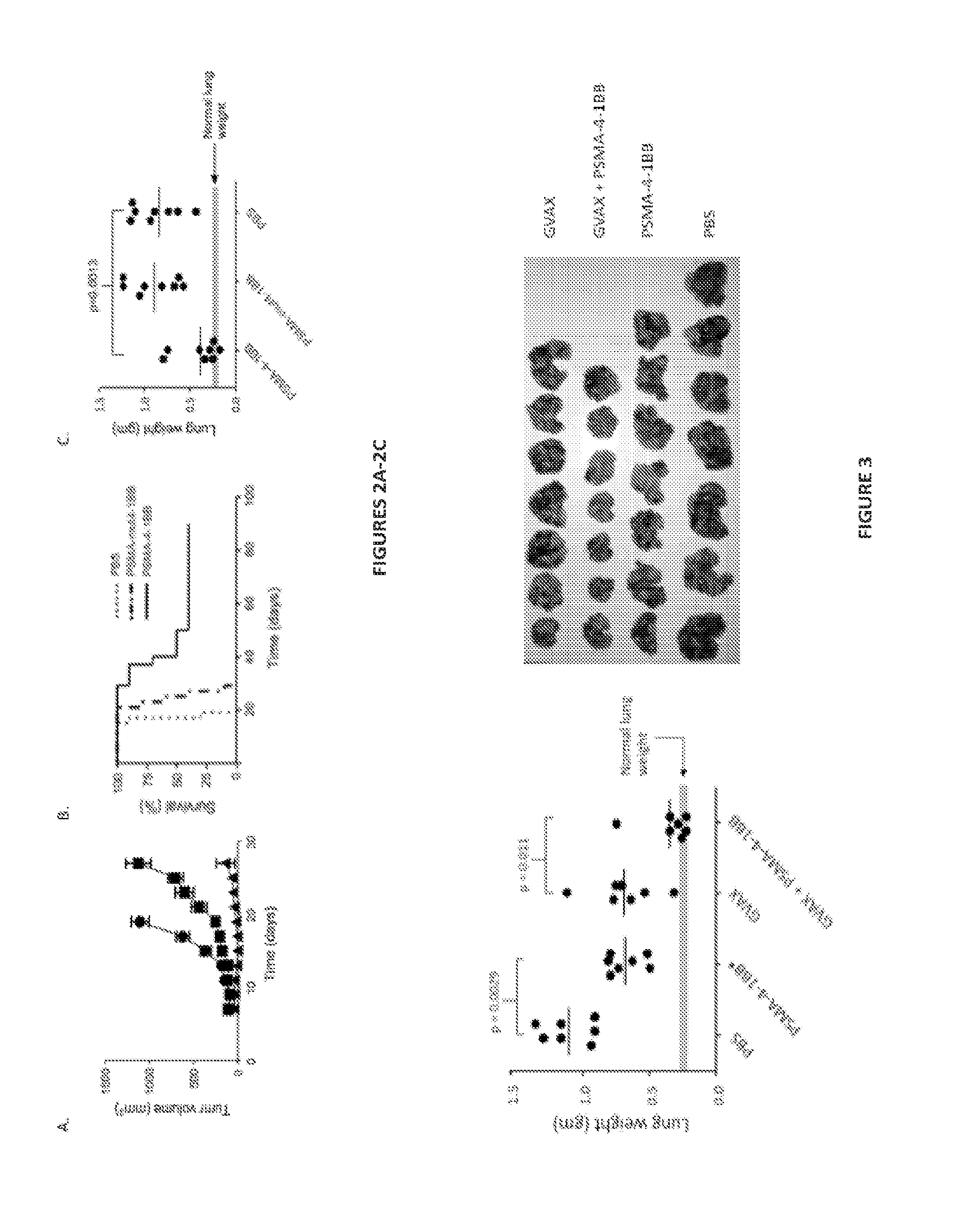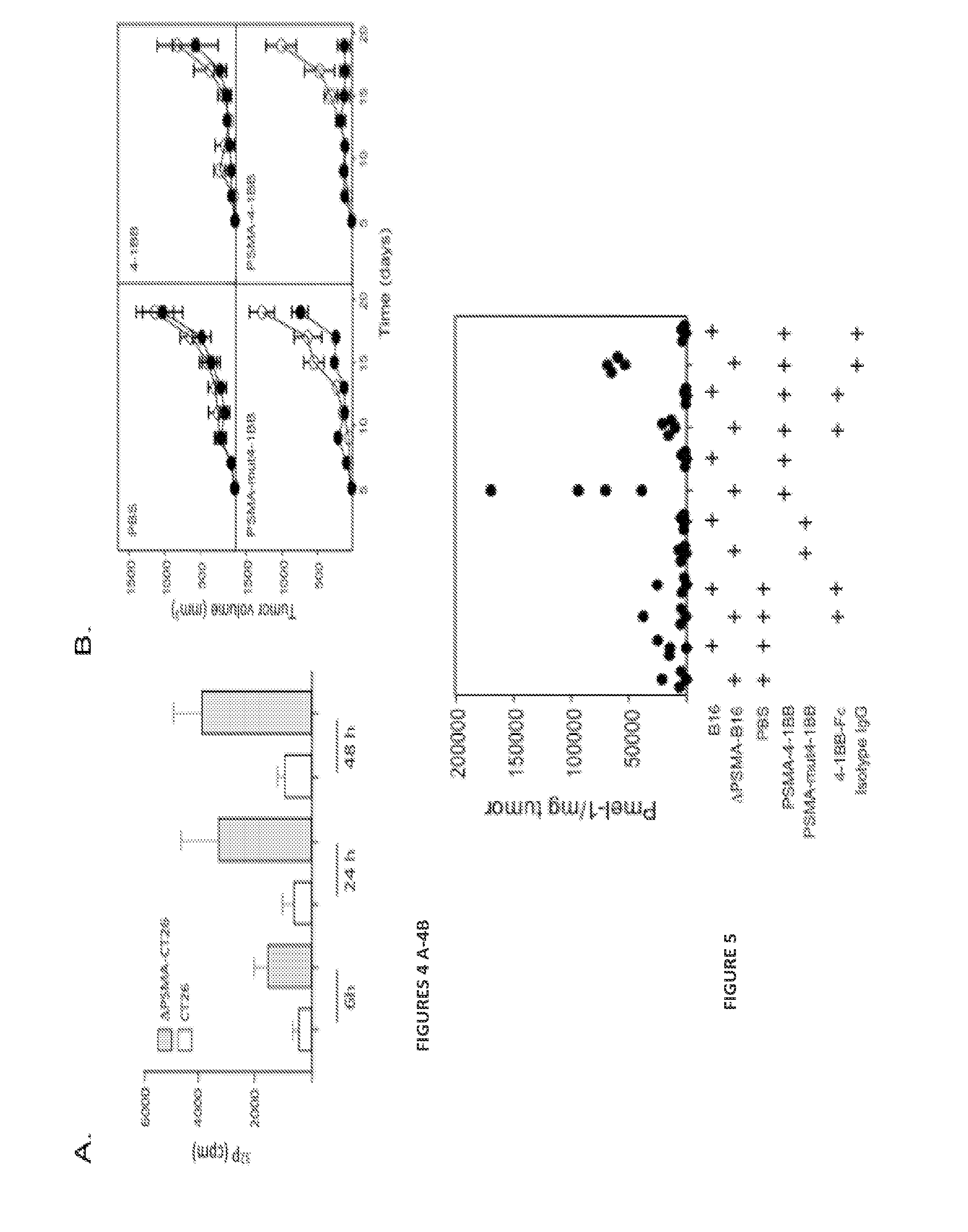Aptamer-targeted costimulatory ligand aptamer
a costimulatory ligand and aptamer technology, applied in the field of aptamer-targeted costimulatory ligand aptamer, can solve the problems of tumor regression, tumor antigens by tumor cells cannot potiate the naturally occurring or vaccine-induced antitumor immune response, and the limitation of protein-based therapeutics,
- Summary
- Abstract
- Description
- Claims
- Application Information
AI Technical Summary
Benefits of technology
Problems solved by technology
Method used
Image
Examples
example 1
PSMA-4-1BB Bispecific Aptamer
[0190]The PSMA-4-1BB aptamer is composed of a bivalent 4-1BB aptamer which binds and costimulates CD8+ T cells conjugated to a human PSMA binding aptamer. The PSMA aptamer targets the 4-1BB aptamer to PSMA expressing tumor cells in vivo and the 4-1BB bivalent aptamer costimulates the tumor infiltrating T cells.
[0191]In Vitro Functional Characterization—Binding to PSMA Expressing Cells and CD8+ T Cell Costimulation. To evaluate the binding of the bispecific aptamer to human PSMA expressing tumor cells, murine CT26 tumor cells were stably transfected with PSMA-expressing plasmids and binding of Cy3-labeled bispecific aptamer was monitored by confocal microscopy. A wild type and mutant human PSMA plasmid were stably transfected into murine CT26 tumor cells. The mutation consisted of a short deletion in the cytoplasmic domain which abolished PSMA internalization upon ligand binding. Binding of Cy3-labeled PSMA-4-1BB aptamer was monitored by confocal microsco...
example 2
Targeting 4-1BB Costimulation to Disseminated Tumor Lesions with Bi-Specific oligonucleotide aptamers
[0200]The development of bi-specific ligands composed of oligonucleotide (ODN) aptamers (Gold, L. 1995. J Biol Chem 270:13581-13584; Nimjee, S. M., C. P. Rusconi, and B. A. Sullenger. 2005. Annu Rev Med 56:555-583) to target costimulatory ligands to tumor cells in vivo is described. One aptamer, the therapeutic aptamer, which binds to and activates a costimulatory receptor, is conjugated to a second aptamer, the targeting aptamer, which binds to a tumor-specific product expressed on the cell surface and targets the therapeutic aptamer to tumor lesions in vivo. Unlike protein or monoclonal antibody reagents, the short ODN-based aptamers can be synthesized in a cell-free cost-effective chemical process, and exhibit little to no immunogenicity upon repeated administrations in vivo. In this study an agonistic 4-1BB binding aptamer conjugated to a PSMA-binding aptamer was targeted to PSMA...
PUM
| Property | Measurement | Unit |
|---|---|---|
| diameter | aaaaa | aaaaa |
| size | aaaaa | aaaaa |
| diameter | aaaaa | aaaaa |
Abstract
Description
Claims
Application Information
 Login to View More
Login to View More - R&D
- Intellectual Property
- Life Sciences
- Materials
- Tech Scout
- Unparalleled Data Quality
- Higher Quality Content
- 60% Fewer Hallucinations
Browse by: Latest US Patents, China's latest patents, Technical Efficacy Thesaurus, Application Domain, Technology Topic, Popular Technical Reports.
© 2025 PatSnap. All rights reserved.Legal|Privacy policy|Modern Slavery Act Transparency Statement|Sitemap|About US| Contact US: help@patsnap.com



